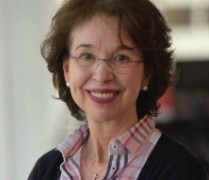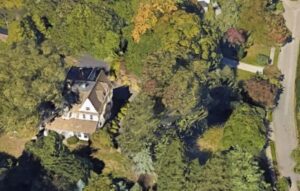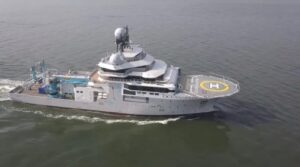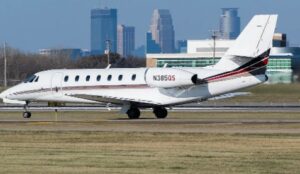American hedge fund manager and billionaire investor Ray Dalio were born on August 8, 1949. Since 1985, he has held the position of co-chief investment officer of Bridgewater Associates, the largest hedge fund in the world. In 1975, he established Bridgewater in New York. It received a $5 million investment from the World Bank’s retirement fund within 10 years.
One of the most influential figures in finance, Dalio developed a number of techniques that are now widely utilised, including risk parity, currency overlay, portable alpha, and global inflation-indexed bond management. After attending C.W. Post College at Long Island University and giving birth in New York City, Dalio went on to get an MBA from Harvard Business School in 1973.
Two years later, Dalio started Bridgewater at his apartment. It was ranked as the biggest hedge fund in the world in 2013. Bloomberg listed him as the 79th wealthiest person in the world in 2020. Principles: Life & Work, written by Dalio in 2017, is a book about business management and financial theory. It was described as a “gospel of radical openness” on The New York Times bestseller list. 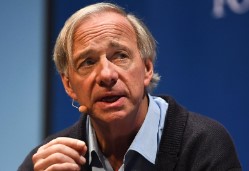
Ray Dalio Bio/Wiki
Rachael Ray Net Worth, Age, Height, Husband, Career
Early life and Education
In the Queens borough of New York City’s Jackson Heights area, Dalio was born. When he was eight years old, the family relocated from New York’s Jackson Heights to Manhasset in Nassau County.
His parents are Ann, a housewife, and Marino Dalio (1911–2002), a jazz musician who “played the clarinet and saxophone in Manhattan jazz venues such as the Copacabana.” Growing up, Dalio worked odd jobs including mowing lawns, shovelling snow, and running a paper route. He has Italian ancestry. He began working as a caddy at The Links Golf Club at the age of 12, which was close to his boyhood home.
During his stay there, he caddied for a number of Wall Street pros, including Wall Street veteran George Leib. For family meals and holiday get-togethers, Leib and his wife Isabelle invited Dalio to their Park Avenue apartment. Dalio later received a summer job at the trading business owned by the couple’s Wall Street trader son.
He started investing when he was 12 years old and paid $300 for shares in Northeast Airlines. After the airline merged with another firm, he double his investment. He had amassed a few thousand dollar investment portfolios by the time he entered high school. In 1973, he graduated with an M.B.A. from Harvard Business School and a bachelor’s degree in finance from Long Island University (C.W. Post College).
Jamie Foxx Biography, Age, Family, Wife, Daughters, Movies, Wiki
Ray Dalio Personal life
Health
Barrett’s oesophagus, a kind of gastroesophageal reflux disease (GERD), is a pre-malignant illness that, if left untreated, can develop into cancer. Dalio has had this ailment.
Philanthropy Works
In April 2011, Dalio and his wife pledged to give more than half of their wealth to philanthropic organisations over their lifetimes by signing Bill Gates and Warren Buffett’s Giving Pledge. He established the Dalio Foundation, his own private charity organisation. The Dalio Foundation had $590 million in assets by the end of 2012.
The foundation’s assets rose to roughly $842 million thanks to Dalio’s further contribution of $400 million in 2013. Millions of dollars have been donated to the David Lynch Foundation, which supports and funds studies on Transcendental Meditation, by Dalio’s foundation.
The National Philanthropic Trust and polio eradication initiatives have both received funding from the Dalio Foundation. Since 2020, Dalio has been a member of the board of trustees at New York-Presbyterian Hospital. The Dalio Foundation contributed $10 million in February 2020 to help China’s attempts to recover from the COVID-19 pandemic’s coronavirus outbreak.
The organisation donated the state of Connecticut $4 million in March 2020 to support nutrition and healthcare. With a grant of $50 million, NYP established the Dalio Center for Health Justice on October 13, 2020. This research and advocacy group’s goal is to lessen the disparities in access to high-quality healthcare that disproportionately impact communities of colour.
The Dalio Center for Health Justice was founded with the aid of the funds. Dalio stated in a statement, “We think that equal healthcare and equal education are the most essential building blocks of equal opportunity and just society. Our purpose is to contribute to these causes.” The Fund for Teachers project, which helps fund teacher fellowships for professional development, has also received financing from the foundation.
The foundation was one of several foundations that helped TED’s Audacious Project, an attempt to encourage social entrepreneurs striving to address global concerns, get off the ground in 2018. Forbes listed Dalio as one of the top-earning traders and hedge fund managers in March 2019.
His philanthropy places a specific emphasis on the oceans of the world and the consequences of ocean pollution. On the Discovery Channel during Shark Week, Dalio’s research vessel and submersible were utilised to seek a big squid. In 2018, Bloomberg Philanthropies and OceanX, a family-run project, pledged $185 million over four years to save the seas.
Dalio promised to donate $100 million to Connecticut public schools in 2019. Additionally, Paul Volcker’s advocacy group for public policy, the Volcker Alliance, has received support from Dalio. The Dalio family has given his foundation more than $5 billion in total, and the foundation has awarded more than $1 billion in grants to charitable organisations.
Ray Dalio Hobbies
Hunting and fishing are two activities Dalio likes doing in the great outdoors. He has gone warthog, grouse, elk, and cape buffalo hunting. He really enjoys bow hunting, and he usually uses a bow to pursue animals.
Aindrita Ray Profile, Bio, Height, Affair, Family, Wiki & Net Worth
Ray Dalio Family
In Greenwich, Connecticut, the Dalio family resides with his wife Barbara, a niece of the sculptor Gertrude Vanderbilt Whitney. Mark, Matthew, Devon, and Paul are their four sons. Devon, their oldest child, passed away at the age of 42 in a car accident in 2020. Paul Dalio, their second child, was born in 1979 and works as a director. 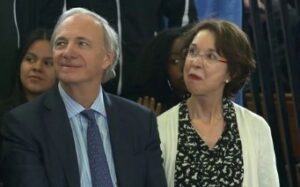
Professional Career
College
Dalio attended high school and was a typical student. He did not see any real-world uses for the abilities he was gaining in school, and he found it repetitious and dull. He struggled to locate a college to enrol in as a result. He eventually submitted an application and was accepted at C.W. Post College, a branch of Long Island University.
In college, he kept buying and selling stocks, but he started to be drawn to commodities futures. At the time, commodity futures had modest borrowing requirements, and Dalio believed he could benefit handsomely from them rather than from straightforward equities. He was also starting to like school at this time.
He began practising transcendental meditation after being granted more freedom, and he continues to do so now. With his growing need for knowledge and his newly discovered method of controlling stress and attention, Dalio achieved academic success. He got accepted to Harvard Business School after graduating from C.W. Post College.
Graduate studies
Dalio had a free summer following his C.W. Post College graduation. On the New York Stock Exchange, he accepted a position as a clerk. He saw Nixon’s decision to remove the United States from the gold standard when he was there. Stock prices on the exchange increased the following day by an average of 33% as a result of the inflation this brought about.
The Great Inflation of the 1970s was brought on by these occurrences. Prices soared as a result of the combination of a loose monetary policy and a lack of budgetary restraint. After his freshman year at Harvard, the following summer, Dalio and his friends founded the business that would eventually become Bridgewater Associates.
It was once a little organisation with a focus on trading goods. However, because of their inexperience, the endeavour was unsuccessful. Despite the failure of the first Bridgewater, Dalio kept the brand and utilised it to launch the biggest hedge fund in history.
After the stock market crashed due to the high-interest rates employed to fight inflation, this experience of trading commodities became considerably more important. Wall Street investors were prompted by this to invest in commodities, which are frequently more durable and successful during inflationary periods.
Professional beginning
Dalio got married and had a family after receiving his Harvard degree. He relocated to Wilton, Connecticut, and set up shop in a former barn. Then Dalio engaged in futures trading on the floor of the New York Stock Exchange. Later, he worked for Dominick & Dominick LLC as the Director of Commodities. He started working as a futures trader and broker for Sandy Weil’s securities company, Shearson Hayden Stone, in 1974. Weil eventually gained notoriety for creating Citigroup.
Dalio’s role at the company was to counsel grain and other agricultural producers, cattle ranchers, and other farmers on risk hedging strategies, particularly using futures. However, he was most unhappy with Shearson Hayden Stone’s hierarchical system, which made him think of his primary school days. He yearned for the more liberated way of life of the college.
At one time, he paid a stripper to undress in front of a throng at the California Food and Grain Growers’ Association’s annual conference. After going out drinking with some coworkers, including his boss, on New Year’s Eve in 1974, he proceeded to express himself creatively until he erupted. Dalio, who was intoxicated, hit his supervisor in the face during an argument. He lost his employment at Shearson Hayden Stone shortly after that.
Bridgewater Associates’ founding
Numerous Shearson Hayden Stone clients continued to trust Dalio and let him handle their money in spite of his hostile behaviour. He was able to pull together the foundation of his asset management fund with the help of this money. He started Bridgewater Associates in 1975 from a two-bedroom apartment in New York City.
Bridgewater originally operated as a wealth advisory business, serving a large number of corporate customers, many of whom Dalio had acquired while working at Shearson Hayden Stone. Dalio mostly provided advice on currencies and interest rates. The business started releasing a paid research report called Daily Observations, in which it examined trends in the world market.
McDonald’s being a client of Dalio’s business was his big break. Then, Bridgewater started to expand quickly. The World Bank and Eastman Kodak pension funds were among the bigger clients that the business landed. Ray and his wife decided to raise a family in Westport, Connecticut, so the company established an office there in 1981.
After benefiting financially from the 1987 stock market meltdown, Dalio began to gain notoriety outside of Wall Street. He participated in the Oprah Winfrey Show segment “Do Foreigners Own America?” the following year. He introduced Bridgewater’s most well-known strategy, “Pure Alpha,” in 1991, which is a play on the Greek letter that, in Wall Street lingo, stands for the premium a money manager might make above a specific market benchmark, such as the NASDAQ.
All Weather, a fund that Dalio started in 1996, was the forerunner of the steady, low-risk approach that would eventually be known as risk parity. Ray and his wife decided to raise a family in Westport, Connecticut, so the company established an office there in 1981. After benefiting financially from the 1987 stock market meltdown, Dalio began to gain notoriety outside of Wall Street.
He participated in the Oprah Winfrey Show segment “Do Foreigners Own America?” the following year. He introduced Bridgewater’s most well-known strategy, “Pure Alpha,” in 1991, which is a play on the Greek letter that, in Wall Street lingo, stands for the premium a money manager might make above a specific market benchmark, such as the NASDAQ. All Weather, a fund that Dalio started in 1996, was the forerunner of the steady, low-risk approach that would eventually be known as risk parity.
Rise To Fame And Prominence
In 2005, Bridgewater Associates rose to the position of largest hedge fund globally. It lost money only three times between 1991 and 2005, and never by more than 4%. The S&P 500 saw three negative years over the same time span, with a negative return of 22.1% in 2002. Utilizing the traditional hedge fund model, which takes a 2 per cent management fee of assets and 20 per cent of annual gains gained through using an investment strategy, the fund increased in size.
The $196 billion California Public Employees’ Retirement System (CalPERS), the $27 billion Pennsylvania State Employees’ Retirement System (Penn SERS or SERS), the Melbourne-based National Australia Bank Ltd., and the pension fund of Hartford, Connecticut-based United Technologies Corp.
were just a few of the enormous institutions that Dalio was managing money for by 2005. The possibility of a worldwide financial disaster was raised by Bridgewater in 2007, and Dalio wrote “How the Economic Machine Works: A Template for Understanding What is Happening Now” in 2008, an article evaluating the potential of various economies using a variety of metrics. In 2007, the company’s total assets under management climbed to $50 billion from $33 billion.
Nobody, according to a 2007 Barron article, “was more prepared for the global market meltdown” than Bridgewater’s customers and Daily Observations members. In the spring of 2007, the corporation “started raising sirens about the risks of excessive financial debt.” Researchers at the company found that the expected future liabilities for bad debts reached $839 billion after looking through the public data of the majority of the leading financial institutions around the globe.
These results were presented but mostly disregarded, in a December meeting between Dalio and representatives of the US Treasury Department and other White House economic advisers. This study helped investors in Bridgewater’s Pure Alpha fund escape a large portion of the 2008 stock market crash. After deducting fees, the value of Bridgewater’s flagship Pure Alpha fund increased by 9.5 per cent in 2008, a terrible year for many of its competitors.
Dalio achieved this by foreseeing that the Federal Reserve would need to print a significant amount of money in order to boost the economy. He purchased gold and other commodities, shorted the currency, and went long on Treasury bonds. John McCain visited the company and chatted with employees while running for president in 2008.
The following year wasn’t as promising. The company’s Pure Alpha fund apparently only made 2 to 4 per cent in 2009, despite the Dow Jones Industrial Average rising by 19% and economic growth exceeding expectations. In 2011, Dalio self-published Principles, a 123-page book that details his approach to corporate governance and investing. By the end of that year, Dalio was in charge of money management for the SERS, Kodak, General Motors, and the Singapore Government Investment Corporation.
He was listed as one of the 2012 Time 100 most important persons in the world. He was ranked by Bloomberg Markets as one of the 50 Most Influential People in 2011 and 2012. Bridgewater’s Pure Alpha II under Dalio’s direction achieved an average return of 10.4% and only three losing years in its lifetime. The Teacher Retirement System of Texas (TRS) paid $250 million for a stake in Bridgewater Associates Intermediate Holdings, LP in February 2012.
Due to the non-voting nature of this share, the pension fund had very little influence on corporate governance. On its 2012 Rich List, Institutional Investor’s Alpha rated Dalio second. Since the company’s founding, Dalio has overseen Bridgewater Associates alongside co-chief investment officers Bob Prince and Greg Jensen. The hedge fund only lately disclosed intentions to change into a partnership.
According to Dalio, this is due to the company’s ongoing sustainability and profit-sharing. Before announcing in March 2017 that he will resign as part of a company-wide shakeup by April 15, Dalio served as Bridgewater’s co-CEO for ten months. To locate a replacement, the corporation has been through seven-year management and equity change.
The fund’s co-CEO Jon Rubinstein was revealed to retire with Dalio but will continue in an advising capacity. Bridgewater Associates managed $160 billion of assets as of October 2017. Dalio has described himself as a “hyperrealist,” and this trait drives him to comprehend the mechanics that determine how the world truly runs, without putting in abstract value judgements, in reference to the personality that has contributed to his success as an investor.
Investment Strategies
With Bridgewater Associates, Dalio employs a variety of strategies, distributing cash to each as he deems suitable. Bridgewater Associates, in Dalio’s words, is a “global macro business” that makes investments based on macroeconomic patterns such as changes in inflation, G.D.P. growth, and exchange rate fluctuations.
Dalio was described as “a big-picture thinker coupled to a street-smart trader” by The New Yorker. Beta investments and alpha investments are the two distinct categories into which Dalio separates his assets. Beta investments generate profits through typical market risk and passive management.
The goal of actively managed alpha investments is to outperform beta investments in terms of returns. Investments in alpha have no connection to the overall market. In order to find fresh assets while avoiding fanciful historical models, Dalio employs “quantitative” investment techniques. Instead of focusing on asset allocations, Dalio wants to develop portfolios with uncorrelated investment results. The majority of the capital that Dalio’s hedge fund receives comes from institutional investors including pension funds, foundations, endowments, and central banks.
Rarely is private capital available to invest in Dalio’s holdings. Like his colleagues, quantitative hedge fund managers David Elliot Shaw and Jim Simons, Dalio converts his market observations into algorithms for application. His approach largely concentrates on a fixed income and currency markets.
Contrast this with individual stock purchases made by investors like Warren Buffett and Peter Lynch. The risk parity strategy, which Dalio utilises within Bridgewater Associates for risk management and diversification, was also made popular by Dalio. According to Bloomberg, Dalio uses an investment approach that combines traditional diversification with “wagers on or against markets throughout the world.”
Leverage, external diversification, and short selling are all permitted when investing using Dalio’s risk parity strategy. As a result, Dalio is free to combine any assets into his investment portfolio. An ideal risk goal level serves as the foundation for Dalio’s strategy’s investment decisions. This is, in contrast, to set a risk goal and then allocate funds.
In order to apply this approach and maintain the optimal risk target level, Dalio uses leverage to fairly spread exposure across different asset classes. In order to distinguish the deleveraging and deflationary process of the subprime mortgage business from a recession, Dalio coined the word “d-process” in February 2009.
He then included the phrase in his investing philosophy. The specifics of Dalio’s investment holdings are mainly kept a secret from the public. Only twelve individuals at his company at any given moment have a working understanding of how it trades, which includes the majority of workers and outside investors.
Masayoshi Son Biography, Age, Height, Wife, Cars, Career
Ray Dalio Net Worth
His net worth as of 2023 is $16.2 Billion. According to press estimates, the majority of Dalio’s wealth comes from his ownership of the closely held Bridgewater Associates, which, as of December 2021, managed over $150 billion in assets. In a June 28, 2018, interview with Bloomberg Television, Dalio said he owned less than half the company.
Dalio is recognised as owning 49.9% of Bridgewater. His ownership is worth $7.3 billion. According to a quarterly report, the Teacher Retirement System of Texas valued its 2.35 per cent at $343 million as of March 31, 2021. According to Form ADV, Bridgewater’s limited partner interests are owned by additional institutional investors. Due to the lack of information, Dalio is not given credit for any money received from those investors save the Texas investor.
According to statistics gathered by Bloomberg, Absolute Return, LCH Investments, and Institutional Investor Alpha magazines, Dalio is estimated to have collected more than $12 billion since 2002 from his part of the hedge fund’s revenues and his returns on investments in the funds.
This sum is reduced by staff bonuses, capital gains taxes, and charity donations, which are disclosed in publicly available foundation tax reports. These tax records reveal that the millionaire has donated about $1.3 billion to the Dalio Foundation. Through a spokeswoman, Alexi Nabarro, Dalio chose not to address his wealth.
Jim Cramer Net Worth, Wife, House, Personal Life
FAQs
How much is the net worth of Ray Dalio?
$16.2 Billion
Who is Ray Dalio’s wife?
Barbara Dalio
What is Ray Dalio’s age?
74 years
What is the name of the Ray Dalio firm?
Chanel

